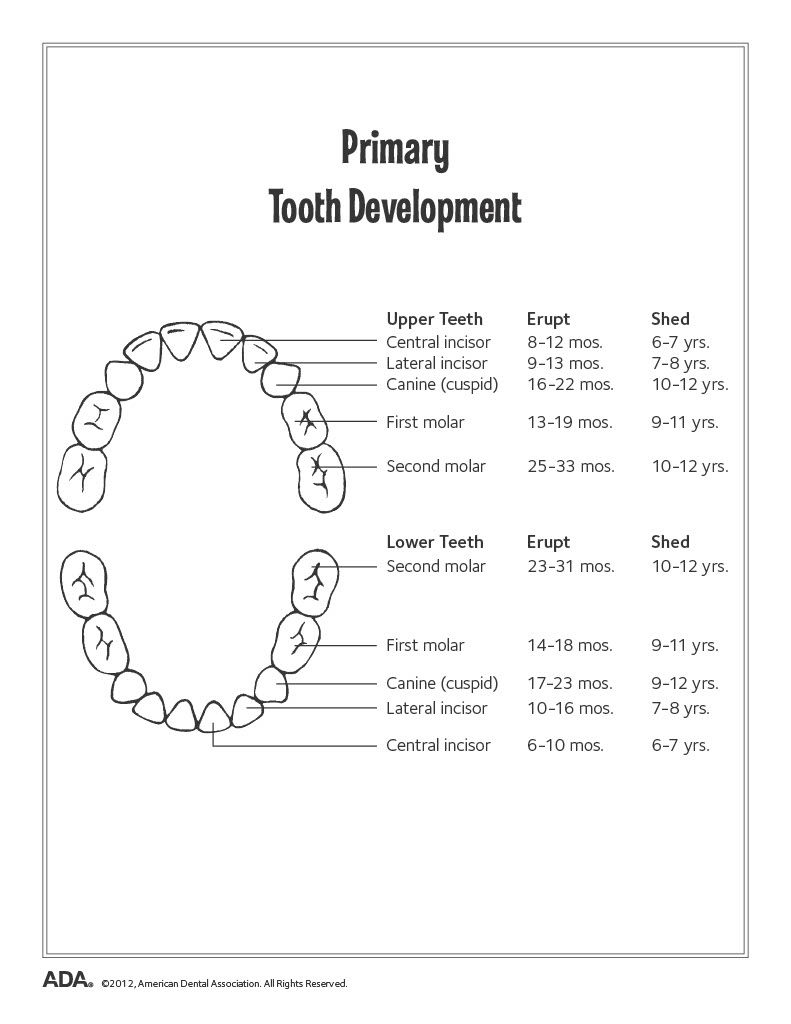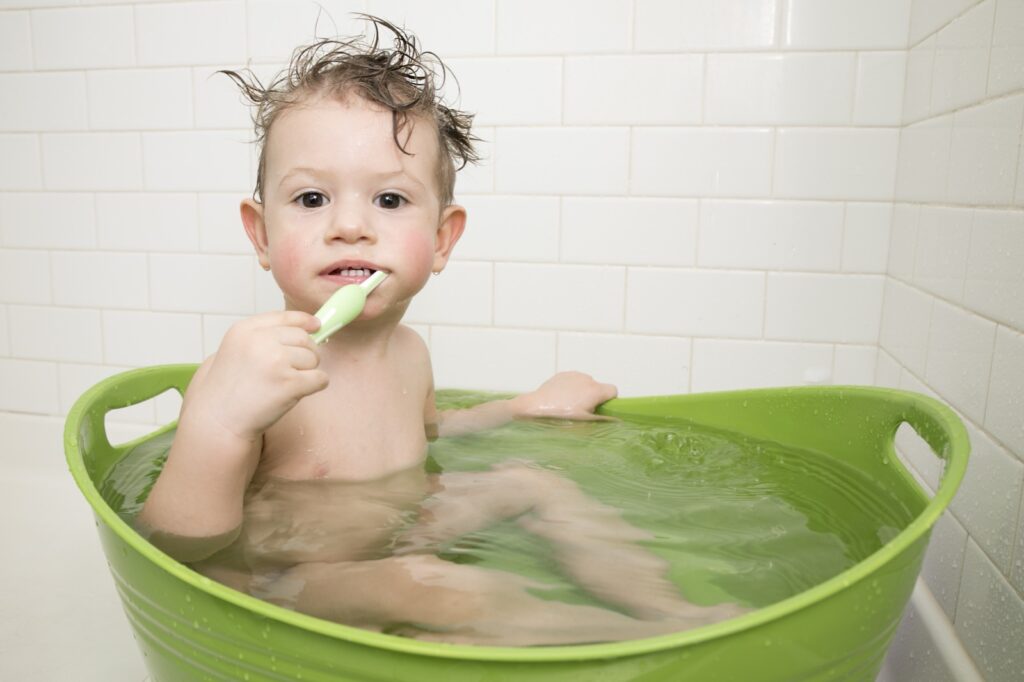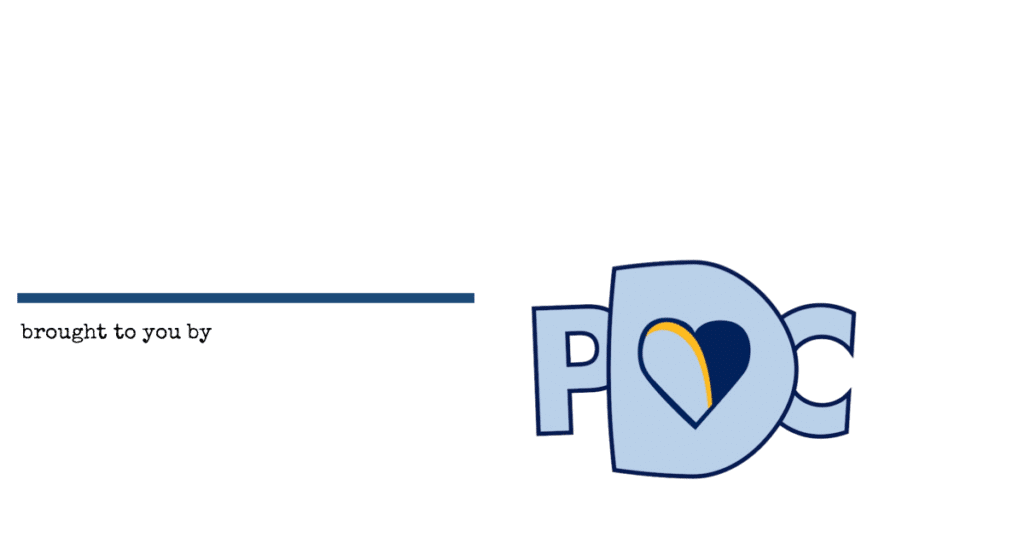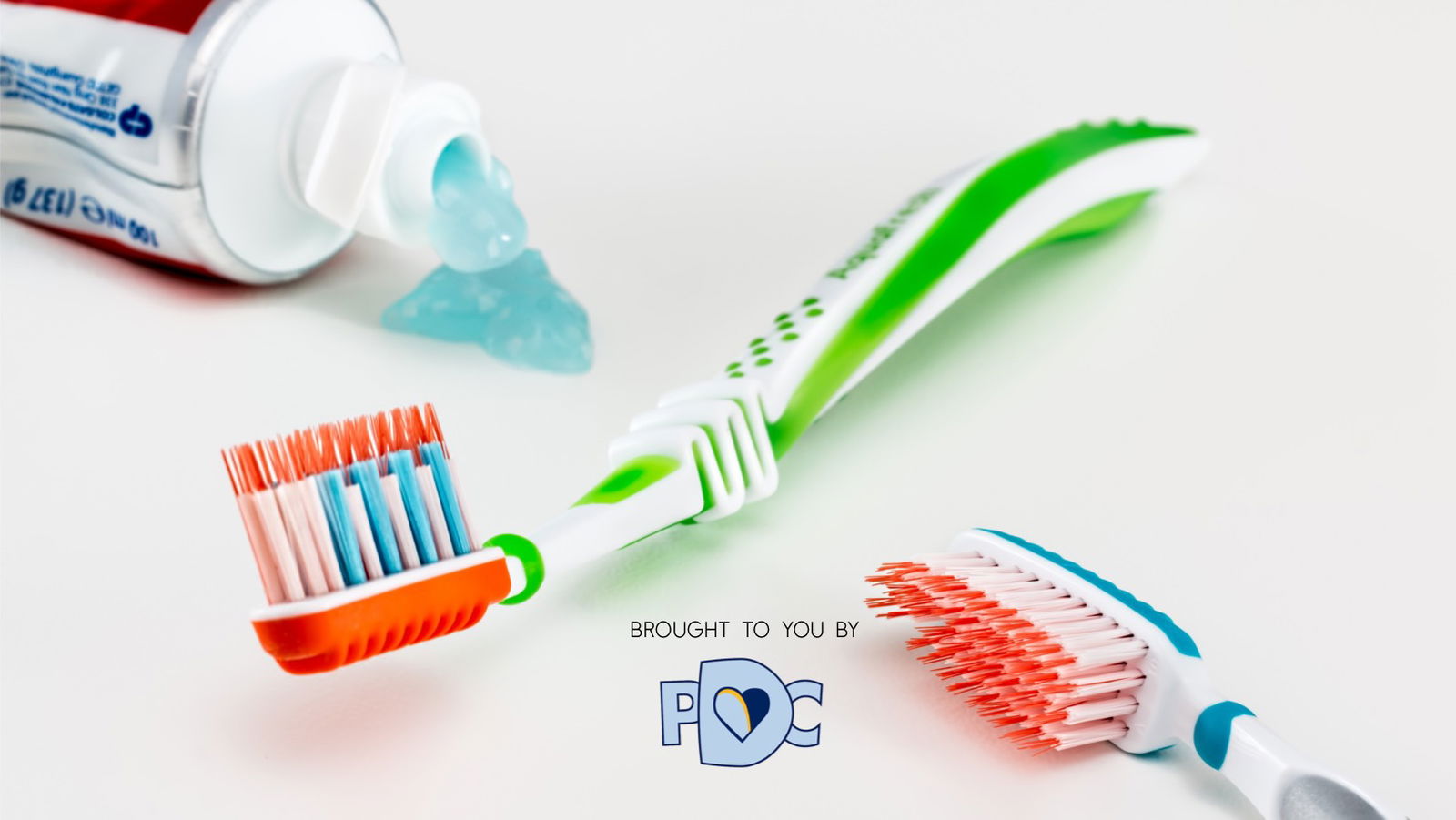Dear Dentists

What is it about our children’s TEETH that leave us moms feeling confused and perplexed? I know that I am supposed to brush twice a day and floss once a day (not that that always happens…), but when it comes to my kids, I have SO MANY QUESTIONS for pediatric dentists!
With that in mind, we crowd sourced questions about teeth to ask our favorite dentists over at Pediatric Dental Center. These are there answers to five of the most common questions. (Check back next week when they answer five MORE questions!)
1. In what order do baby teeth come in? And what is the approximate age range for this? (Is there an age when parents should worry if their child doesn’t have any teeth yet?)
Typically, the baby teeth come in front to back. It is definitely an age range, and every child is different. A few months early or late is no big deal. Typically, if the baby teeth come in on the earlier side, the permanent teeth will come in on the earlier side as well. If they come in later, so will the permanent teeth. If no baby teeth have come in by 18 months to 2 years, we may start to have questions as to what is holding them up. This is extremely rare and often associated with medical conditions that have been identified since birth. Fun fact, the baby teeth start to develop by the 4th month in the womb.

2. In what order do baby teeth fall out? And what is the approximate age range for this?
The chart also details the age range when the baby teeth fall out. It’s great to start wiggling on those front two baby teeth when they get loose, as those are usually the easiest teeth to wiggle out. It teaches good skills that the dentists really want your kids to have for the next 18 teeth that will need to be wiggled out in time. Occasionally, the teeth may not want to come out on their own, despite the permanent tooth already erupting. In this case, it can be helpful to discuss this with your pediatric dentist so they can guide you on if intervention is needed.
3. Baby teeth falling out happens in two stages, right? Can you explain this?
Baby teeth falling out is more or less a continuous process; however, it does seem as if it is in two stages. The front teeth start first, then the back teeth. Sometimes there is a year or two difference between the last front tooth falling out and the first back tooth falling out.
4. At what age should a child have their first visit with pediatric dentists? What does that appointment look like?
We recommend, in conjunction with the American Academy of Pediatric Dentistry, that the first dental visit be within 6 months of the first tooth coming in or by age 1, whichever is first. This first visit with pediatric dentists is to establish a dental home and to educate our parents on how to properly take care of their baby’s teeth. We do not expect a 1-year-old to sit perfectly for a full cleaning like a 4- or 5-year-old would. We do attempt to clean the teeth. Sometimes this is successful, sometimes it isn’t. It’s okay if we do not have a full cleaning on the first visit. The idea is to discuss hygiene habits, the role nutrition plays in the health of the teeth, and guidance on tooth eruption and potential teething pains. It is good to establish your dental home by age 1 as well, in case, as they are learning to walk and run, they take a tumble and knock any teeth out. Or, generally, that you have a place to go to have your child properly evaluated.

5. What are some tips and tricks for cleaning a baby’s teeth (under the age of 2)?
This can be tricky. A lot of times, no matter what we do or try, it can still be a struggle. Some tips are to start early and do it often. As soon as those front teeth start to come through, go ahead and try to get in the routine of brushing after the morning bottle and after the evening bottle before bed. As your child gets more mobile, we can distract them with videos to watch as we brush their teeth. Let them start first without toothpaste, then the parent follows up afterwards to get all those hard-to-reach places. Sometimes it helps to use a mirror, sit behind your child, and wrap your legs around their body. Then take your arm and wrap around their body in a “hug” from behind. This will help stabilize them. Then begin to brush the teeth. Your child can see what is going on which may help them. In the case of true oral aversions, I recommend still attempting to brush the teeth twice a day. Every morning, start on the bottom teeth and then work your way to the top. In the evening, start on the top teeth and work your way to the bottom. That way, if you just can’t get it all done in that brushing session, hopefully, between the two sessions, you’ve gotten each jaw brushed once. Whatever you do, we want you to try to stick to a routine. Consistency will yield better results sooner. As parents, it’s important to also give yourself some grace. Sometimes, life happens and you may miss a time or two of brushing. That is okay. Just try the best you can, and overtime, you will see positive results.
I hope you learned something! Check back next week for more questions dealing with bigger kids!

PDC takes both the child’s and the parents’ feelings into account when we provide dental care. You are free to accompany your child through every part of their dental visit and accommodations can be made for children with sensory needs. Spanish speaking staff available for all visits. We encourage and teach children how to care for their teeth in order to establish a solid foundation for a beautiful smile for a lifetime. PDC has 4 Pediatric Dentists on staff and two locations to choose from.
For fun dental tips & tricks videos, check out their Instagram page here
You can make an appointment by calling 901-560-4386!









